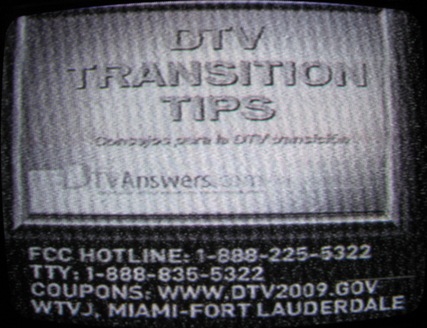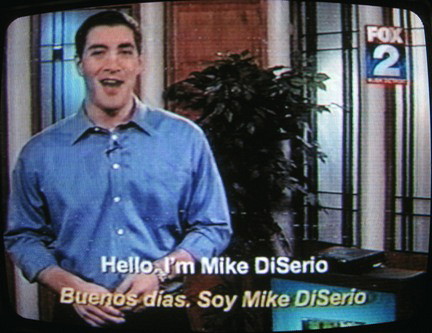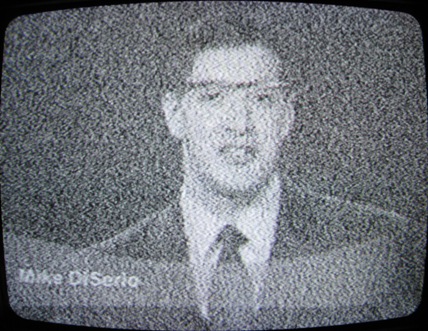
|
|
|
• DIGITAL TV TRANSITION OF 2009 AS RECEIVED AND RECORDED IN TV DX EXPO pages and images are owned, maintained, and |
|
• Nightlight is a station that aired continuous (looped) DTV Transition information beginning on June 12, 2009 (except for emergency and severe weather alerts). Although Nightlights were allowed to operate until July 12, only a small number remained on the air until that date. Nightlights used various types of local IDs. • Transition Highlight photographs display local DTV Transition information that was broadcast on or prior to June 12, 2009. This includes a variety of on-air Transition-related material. These stations left the air or switched to Nightlighting by midnight on June 12. |
| The Final Days of Analog TV in the USA |

|
|
ANALOG NIGHTLIGHT ACT
According to Doug Smith (W9WI), Congress created the "Analog Nightlight Act" to allow some analog stations to continue broadcasting DTV Transition information and emergency information after the analog TV shutdown on June 12, 2009. Stations that participated in the Nightlight program could remain on the air until July 12. Doug reported that over eight-hundred stations were deemed "eligible" to paticipate. However, his list of stations that actually expressed an interest in Nightlighting was short.
Here is
(Source: "TV News," VHF - UHF Digest, June 2009. Doug is a broadcast industry professional, a DXer, and a Ham operator. He also writes about DXing for Monitoring Times and is a member of WTFDA's board of directors.) The station to the right is WCVB-5 Boston. |
|
NIGHTLIGHT PROGRAMMING AT A GLANCE Although Nightlights aired a variety of DTV Transition programming, the great majority of stations used looped programs produced by the National Association of Broadcasters. Stations generally alternated between English and Spanish versions of the NAB programs. Even stations that produced their own Transition programming included some NAB material in their program loop. Many Nightlights inserted local information between the loops. For example, KVVU-5 Henderson-Las Vegas inserted a short video which featured newscasters John Huck and Olivia Fierro. KRGV-5 Weslaco, on the other hand, used a slide presentation and video of General Manager John Kittleman talking about the DTV Transition.
WPBT-2, WTAE-4 Pittsburgh, and a number of other stations aired what appeared to be a short commercial for Comcast (the cable TV company) at the beginning of the loop. A few stations used unique programming. WGBH-2 Boston aired a program featuring PBS's This Old House hosts Norm Abram and Kevin O'Connor. (That program had already been shown at various times during the first half of 2009 on PBS affiliates around the country.) Another Boston Nightlight, WCVB-5, broadcast a progam entitled The Digital Truth, which was hosted by newscaster Susan Wornick.
From a DXer's point of view, the best Nightlights were the ones that placed local ID material on the screen continuously. |
|
THE NAB NIGHTLIGHT PROGRAMS
The National Association of Broadcasters DTV tips programs dominated Nightlighting. Mike DiSerio hosted two versions of NAB's English DTV Transition Tips program, while Rodrigo Vidal hosted NAB's Spanish program. The NAB programs aired on multiple stations in a number of markets (including Pittsburgh, Miami, and Dallas-Fort Worth). The screen to the right was shown at the end of the NAB Transition programs. The station here is WYFF-4 Greenville, SC. |
WTVJ-6 Miami
 NAB's DTV Transition Tips program Near the beginning of the program |
KOB-4 Albuquerque (1-866-503-3329)
 Rodrigo Vidal hosted NAB's Spanish version of DTV Transition Tips. |
WJBK-2 Detroit (FOX2)
 Host Mike DiSerio is dressed casually in this version of the NAB program. This was the most-common show used by Nightlights that I received. |
KVVU-5 Henderson-Las Vegas
 Mike DiSerio is dressed in a business suit in the other version. I saw this one on a few stations. (The bar on the forehead is a problem with my video recording.) |
|
|||
|
|
TRANSITION HIGHLIGHT PROGRAMMING AT A GLANCE
During the weeks prior to the June 12 DTV Transition, analog TV stations devoted a large amount of time to preparing the public for the upcoming changes. That information ranged from a simple crawl at the top or bottom of the screen to reports about the analog-to-digital conversion on local newscasts. In addition, the NAB produced some short DTV Transition spots that were aired during commercial breaks by stations around the country. When the June 12th Transition Day finally arrived, some interesting full-screen messages could be seen throughout the day and night on stations that had ended normal analog programming earlier in the day.
Many analog stations (like WPVI-6 Philadelphia above) discontinued analog broadcasting at the end of local newscasts. Those final newscasts devoted much time to a last-ditch effort to inform viewers about the forthcoming conversion. TV stations realized that some viewers (for whatever reasons) were not yet prepared for the Transition. The Transition Highlight pictured to the left is WTTG-5 Washington, DC. The midday newscast was the last regular analog program that WTTG broadcast. The ladies answering the phones appear to be busy advising viewers who were not yet ready for the "switch to digital tv." The station converted to Nightlighting after the newscast. |
|
|
|
Return to
index page of
TV DX EXPO |
|
TV DX EXPO pages and images are owned, maintained, and |